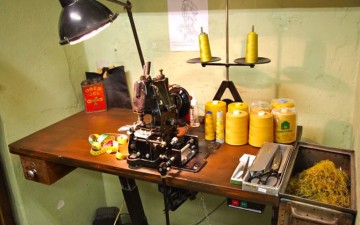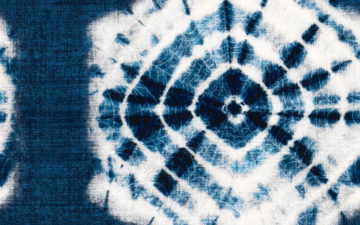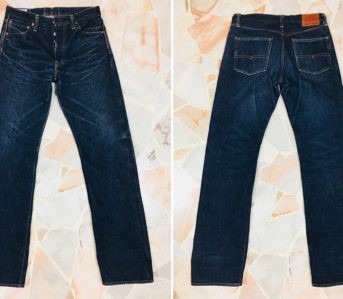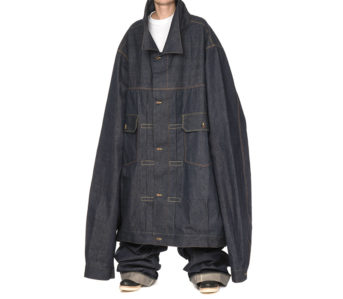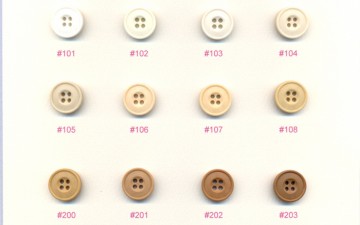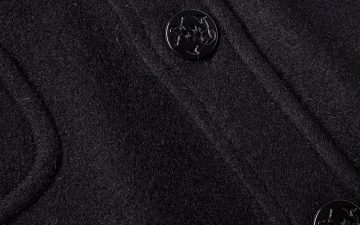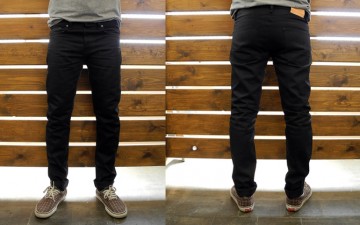Hey, you! Yeah you. You look pretty ungrateful, to tell the truth. You look like the kinda person who doesn’t even care about buttons!
You probably take buttons for granted. You spend all day thinking about weaves, dyes, and the selvedge edges of your favorite garments, but you don’t even wonder what your buttons are made of? The humble button has existed in various forms for roughly 5,000 years, so let’s take a moment to respect this most ancient keeping-your-clothes-on device.
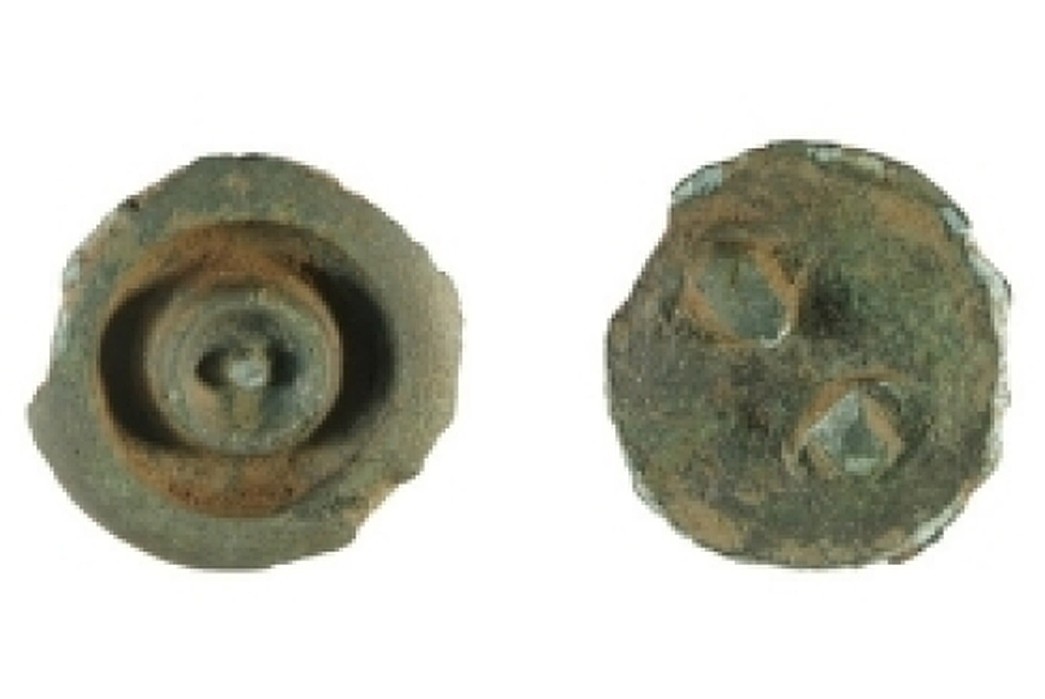
Buttons, despite their long and almost-interesting history, were only used as fasteners in more recent centuries. With the advent of button-holes, people could wear more form-fitting clothes and didn’t have to worry about being pricked with pins or broaches. But it wasn’t until the dawn of the nineteenth century that buttons assumed their most common form: the standard 4-hole button.
Fasten in, we’re about to rundown the top types of button materials and where they’re found.
Melamine
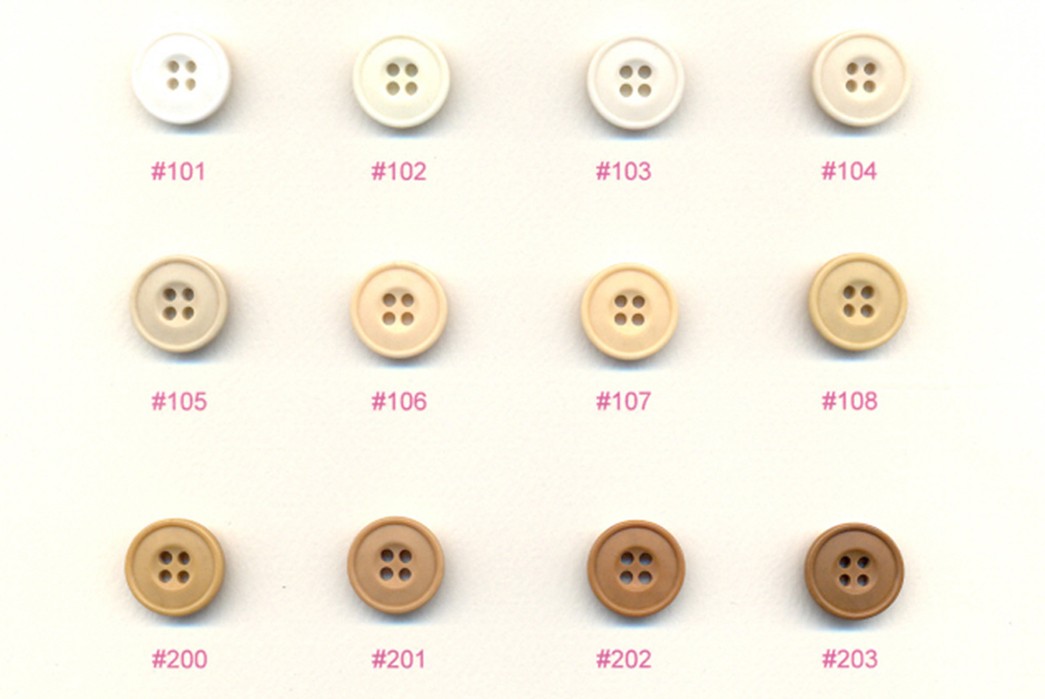
Melamine was a material developed by the Watertown Manufacturing Company under contract by the US Navy during the early 1940s. Melamine was first used to make light-weight, durable dishware to replace the Navy’s heavy, fragile ceramic kitchenware, but was soon found to be a more convenient and modern alternative for uniform-buttons.
Melamine buttons have a seam around the outside of the button and occasionally some extra plastic or imperfections left from the molding process. But if you’re really not sure whether or not something is made of melamine, try and light it on fire. The real stuff won’t burn. Melamine also launders well and is quite strong.
Horn
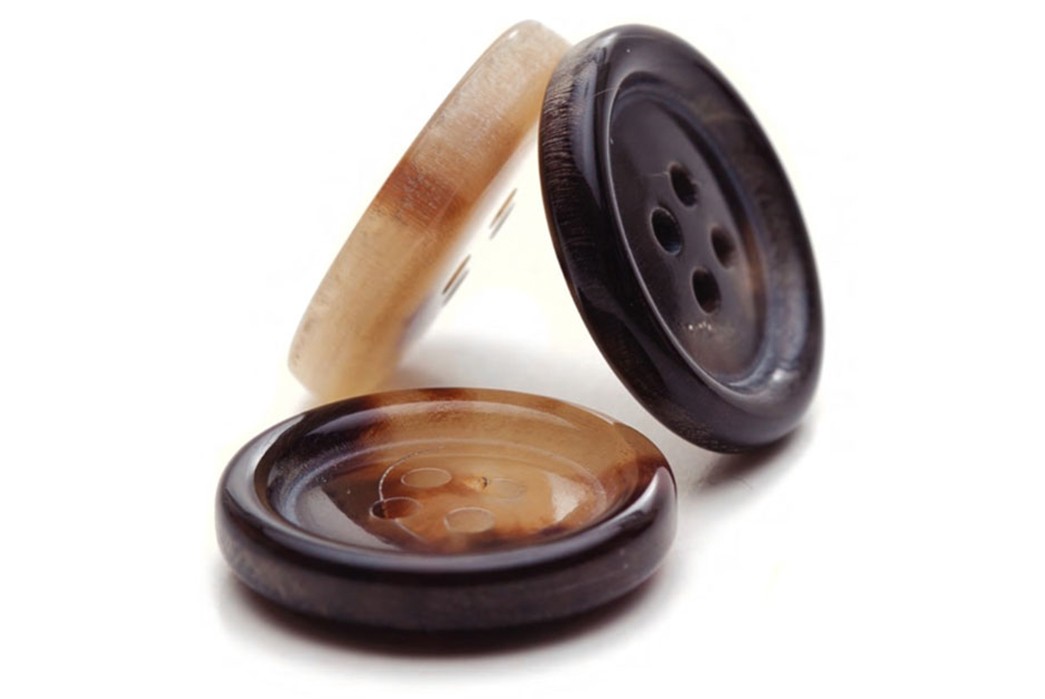
Horn Buttons. Image via Intro Bottoni.
Horn buttons, being essentially bone, are quite strong. What sets them apart from their artificial cousins is the subtle nuance in color and texture on the surface of the button and around the outside edge. Most formalwear nerds prefer horn buttons on their suits.
Chalk/Polyester
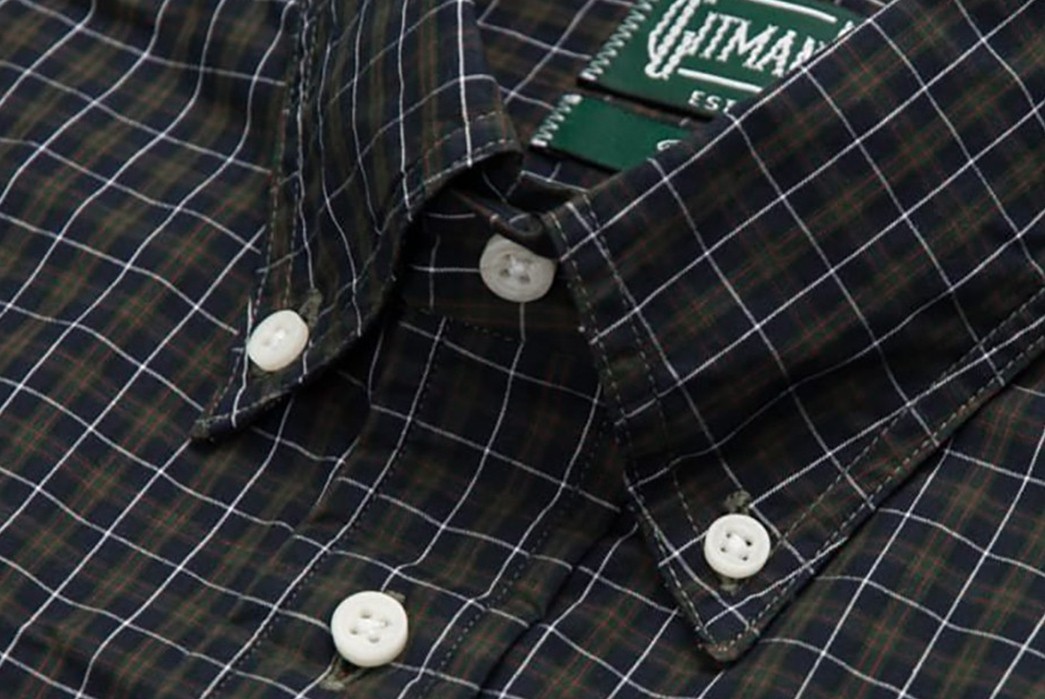
Chalk buttons. Image via Ka-Pok.
Chalk buttons are, contrary to their name, useless for writing on black boards. They’re actually made from unsaturated polyester resins. They are cast in sheets and then turned and polished. But chalk/polyester buttons are not especially known for their strength.
Plastic
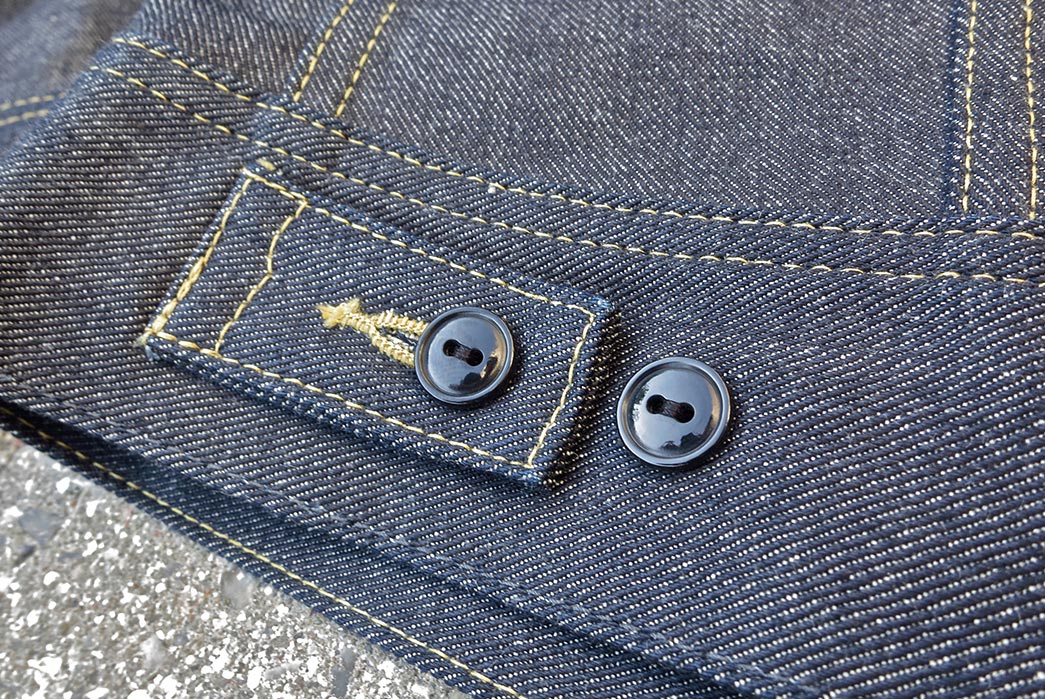
Plastic Buttons. Image via Ropedye.
Plastic is a relatively new invention and if you’ve been paying attention, the vast majority of your buttons are probably plastic. The first completely synthetic plastic was made in 1904 by Leo Bakeland and in 1920, he used this new-fangled synthetic material for Bakelite Buttons. There are many different kinds of plastic buttons and they became more and more common, especially after World War II, but Bakelite was one of the first and most sought-after by collectors.
Nut

Ahem, not THAT type of nut button…
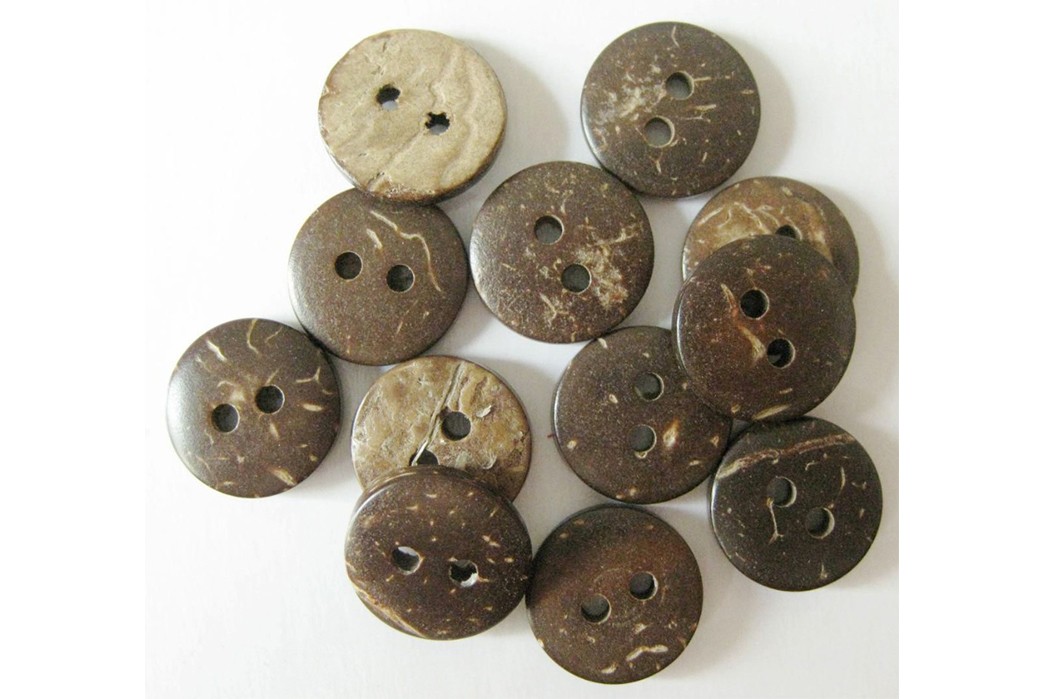
Nut buttons. Image via Aliexpress.
Nut buttons is a rather broad category, but nut buttons are made from organic plant materials such as the Tagua root (corozo) or coconut. Nut buttons, also referred to as vegetable ivory, are made from natural, porous materials that take dyes well and have a natural grain. They can be highly processed or left unrefined and natural, as is often seen with coconut buttons on Hawaiian shirts. For those hoping to go green, but who value the nuance of a horn button, Corozo is a really good choice.
Nut buttons are naturally impact-resistant and launder well.
Metal
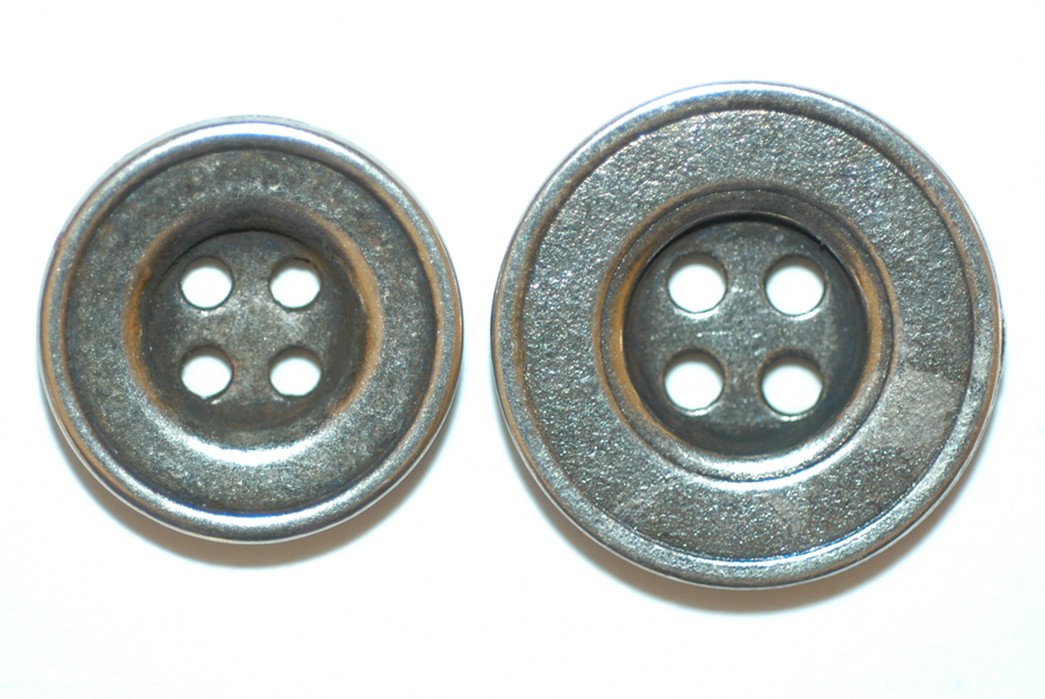
Metal Button. Image via Suit Button.
We end with the undeniable victor in the button-strength contest, metal. Metal buttons were most often used in military and workwear contexts where strength was most crucial. Especially for heavier materials, like denim, metal buttons are the best choice for their toughness.
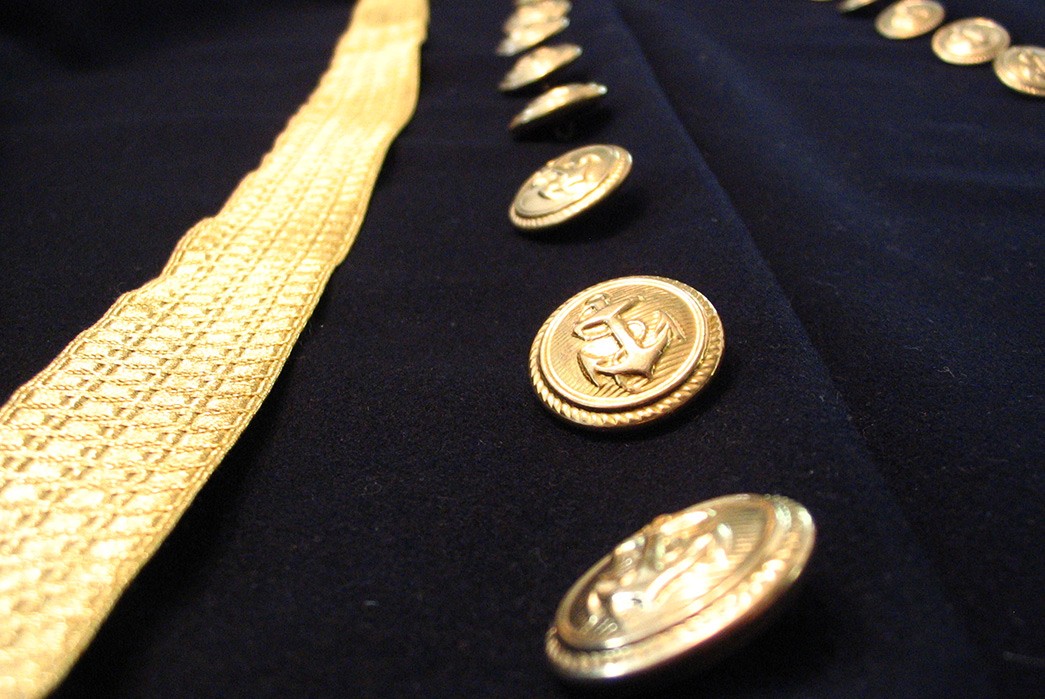
Captain’s coat. Image via Man The Captain
Metal buttons are also shiny! So even though highly-prized for their durability they are used almost as often for decorative purposes. These kinds of polished metal buttons bring buttons back to their roots as a gaudy detail for an outfit more than a pragmatic fastening device.

